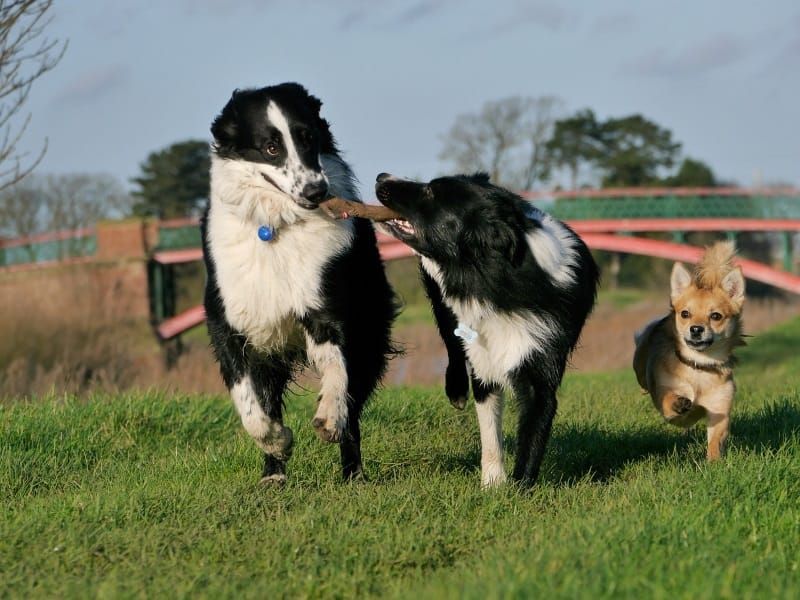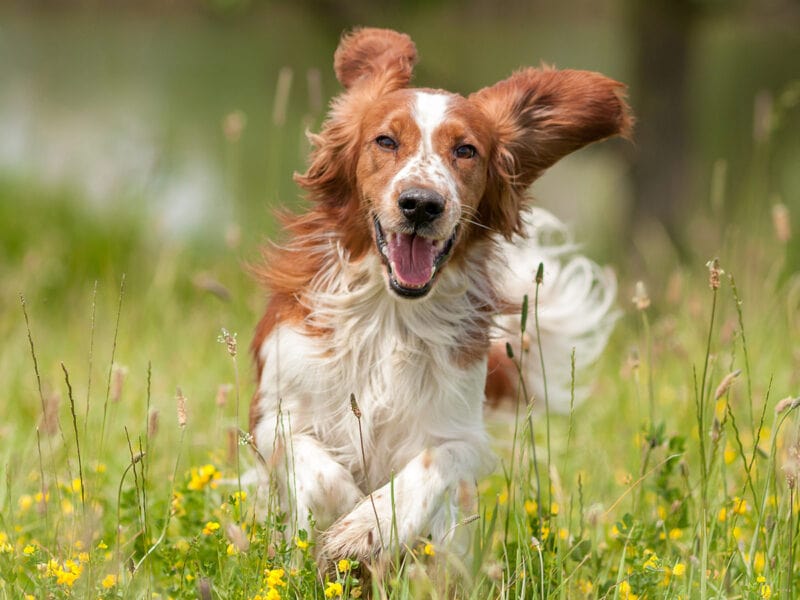As you know, dog communication is non-verbal. In fact, your communication with your dog is not (always) verbal either. What happens is that the dog associates a sound with your body language. By interpreting the dogs’ body language you will detect more quickly how they feel in certain situations.
Dogs’ body language, just like human body language, is complex. Many parts of the body are involved, and each part gives off a different signal. There are typical behaviours, mixtures and variations that draw dog psychology. From the habit of socializing and the willingness to do so, to the position and movement of the tail, and through the position of their legs, eyes, and ears.
Here we present a basic -very basic- list of behaviors, with a typical description of associated gestures. You will discover new things, and observe your dog more closely.
Dogs’ body language
Behavior
When a dog feels safe it is because it feels free from threats and good with its environment. Comfort plays an important role in safety. The dog is friendly and upright, with its head held high and its eyes raised. The tail does not always follow the same pattern. You can swing it, move it gently or leave it hanging.
Cheerful
Dogs’ happiness comes from their safety, and both show very similar behaviours and signs. The dog may pant or move around with a desire to play. It moves looser and swings its tail.
Playful
If your dog looks up with his chest down or touching the ground, panting with a quick tail wag, and is in a position to jump and run with his front legs forward, he wants to play.

Excited
When a dog is excited, it will have the same position to jump and run, to want to play. You add an open look and he’ll have his tongue out. He will pant anyway, and don’t be surprised by any moaning.
Now, the excitement may need to be treated. Very excited dogs may show signs of exhaustion or over-stimulation. And that can bring on stress and anxiety. In the early stages, you can calm an over-excited dog with sport or obedience exercises, although perhaps having a dog trainer can help.
Eager
Unlike positive emotions, an anxious dog keeps his head down and his ears back. With its neck stretched out and its back taut, it hides its tail between its legs. Sometimes they even lick their lips or yawn excessively.
Constant stimulation can cause dogs to overreact and develop fear or even aggression. In this case, it is best to divert attention away from the dog and avoid overwhelming it.
Fearful
We use fear to avoid confusion. A fearful dog is used to being afraid because of past experiences. These are more intense signs than those of anxiety. Tension and position are very similar. His look is distracted and it is common to see him shaking, urinating or defecating.
Howling and whining are normal when a dog is afraid. And if he feels threatened he can become aggressive. It is best to calmly walk away from the situation. If you are the owner, acting calmly and safely is essential. Take him to an environment where he feels safer.
Aggressive
If anxiety and fear are not treated in time, the dog may start acting aggressively. And in that case, it is inevitable to turn to a specialist who will identify the cause.
It is easy to recognize an aggressive dog:
- forward paws marking position,
- forward bend,
- ears completely backwards,
- erect head
- sharp look.
- tail, usually straight and up,
- visible teeth
- threatening grunts and barks
- bristly hair
Submissive or dominant?
Dogs communicate with signals that are transmitted in turns. This includes them assuming variable roles, which are sometimes interpreted as domination or submission by humans. Submission is, for dogs, a sign of not being a threat. It is a chosen behaviour, and not necessarily an imposition.
A dog with submissive behaviour:
- head down
- distracted gaze
- low or neutral tail, but not hidden.
- lying with exposed abdomen
Approaching or licking another dog or person is a sign of not wanting to harm them.
Dogs’ body language is a complex subject, and we will go deeper into the positions and movements of the different parts of their bodies. You can see that dogs’ body language is not that far from ours. In the end they share very similar psychological mechanisms, and related to the same needs.




